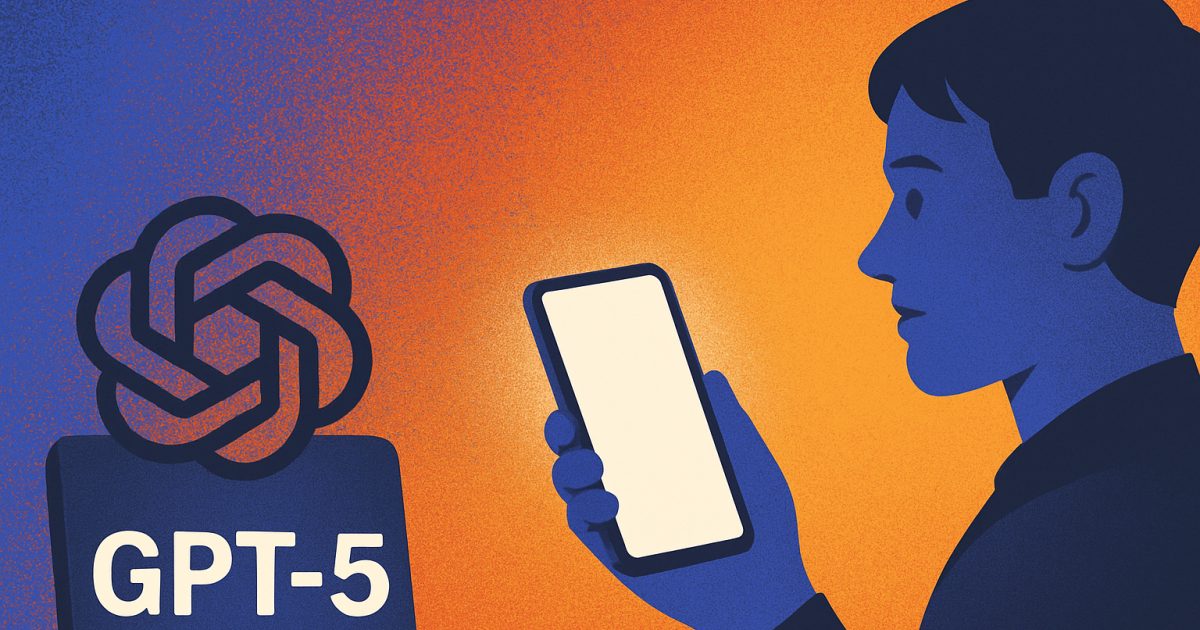ChatGPT-5 Could Be AI’s “iPhone Moment”: Are You Ready? – National Newswatch

Topics
National Newswatch
August 5, 2025
There are moments when the world changes—splitting the atom, the fall of the Berlin Wall, and, more recently, launching the iPhone. The iPhone fused the cellphone, the music player, and the internet into something so seamless, so personal, so intuitive that the digital world seemed to land in the palm of our hand. ChatGPT-5—OpenAI’s long-awaited, next-generation chatbot—is imminent, and it’s set to change the field again—this time by transforming our relationship to AI from tool to partner.
Specifically, GPT-5 will:
- change how we use AI to solve problems;
- personalize its relationship to us; and
- begin to act on our behalf.
Let’s look briefly at each.
1. From Search Engine to Thinker
Many of us use ChatGPT regularly, but for the most part, we treat it like a conversational search engine. We ask questions, get answers, or use it to write emails or memos. We know it does more than Google—but for most users, not much more.
GPT-5 opens a new door. It doesn’t just search—it reasons. Ask it for the time, and it simply retrieves the answer. But ask it what colour to paint your house—or whether to say yes to a third meeting—and the conversation changes. That takes judgment. And for that, you need options, tradeoffs, analysis, and more.
That’s where GPT-5 shines. When a question requires reasoning, it analyzes, explains, and asks things back. And without you needing to know how, it draws on what it needs—logic, language, memory, even visuals.
Tasks that used to take hours—comparing claims, gathering sources, thinking things through—can now unfold in a single, evolving conversation.
- That’s the first shift. GPT-5 doesn’t just provide answers. It can help people think more clearly and make better decisions.
And if history is any guide, those who engage early won’t just understand the shift—they’ll help shape it.
2. From Customization to Personalization
If you’ve used AI recently, you’ve probably seen it do things that, while helpful, can feel a little eerie—like predicting a sentence you were about to type, suggesting phrasing that sounds exactly like you, or recalling a past conversation at just the right moment. It can feel like déjà vu.
GPT-5 takes this and scales it. The system doesn’t just remember your preferences—it tunes itself to you. It starts to recognize patterns in how you think, speak, and solve problems, and it adapts to them. This isn’t just customization. It’s personalization.
Two breakthroughs make this possible: major gains in memory, and the ability to work across multiple formats—text, voice, images, and soon, video. Together, these let GPT-5 recall not just what you said, but how you said it. Over time, it starts to anticipate your needs, offer tailored suggestions, and respond in ways that sound—and feel—more like you.
- And that’s the second shift. Personalization means GPT-5 doesn’t just respond to you. It gets you.
Now the system understands your goals and, as a result, it gets you to them faster. The whole AI experience starts to feel more fluid, more intuitive, more personal.
3. From Assistant to Agent
The third leap forward with GPT-5 is that it starts to act. This is an AI that doesn’t just respond—it moves.
At first, the actions will be small—and deliberate. GPT-5 won’t reschedule your calendar or place orders without your consent. But it will begin engaging you proactively. It might anticipate that a document needs to be sent. Or draft a follow-up message before you realize you forgot.
- And that’s the third shift. Users will stop directing each bit of behaviour and start managing for goals—and GPT-5 will start performing the tasks to achieve them.
It’s still early. But agency is real, and it’s already here. It marks the beginning of a new relationship with technology—where your tools don’t just answer questions. They act on your behalf.
A New Kind of System—and a Familiar Pattern
So where does this all lead?
GPT-5 isn’t just smarter or faster. It brings things together—reasoning, memory, voice, and action—in a single, integrated system. That’s new. And it marks the beginning of something different: a technology that doesn’t just respond to you but learns to work with you. That change—subtle at first—will become foundational.
We’ve seen it before. The iPhone fused the web, the phone, the camera, and the app into one device—which changed how we lived. It drove social media, real-time news, and a kind of always-on public self. Many believed it would democratize access, strengthen connection, and expand opportunity.
And it did—some of the time. But it also introduced distraction, polarization, and entire industries of surveillance. The technology was seamless. The effects were not.
Is GPT-5 the start of another such shift?
It’s not clear yet where it will land, but the system is changing. While we can influence it, no one can fully control or just stop AI development. However, the people who engage with AI—and learn to use it thoughtfully—will help shape how this change plays out.
Perhaps the question we should all be asking now is not whether we can halt GPT-5 but, as this shift takes hold, what am I doing to ensure it is all for the best?
Don Lenihan PhD is an expert in public engagement with a long-standing focus on how digital technologies are transforming societies, governments, and governance. This column appears weekly. To see earlier instalments in the series, click here.
Every Saturday, Peter Mansbridge provides thoughtful takes on this week’s news stories. Subscribe for FREE! You can unsubscribe any time.
© 2025 National Newswatch
